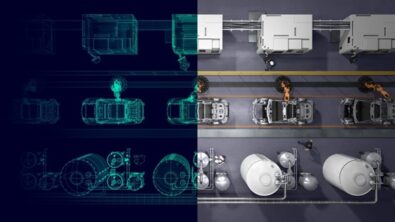The importance of creating openness between platforms

Openness helps people collaborate and communicate. It increases productivity within a digital environment.
With so much varying software between OEMs, suppliers, vendors and others, utilizing open technology can ensure effective collaboration and sharing of important information between different companies. The more companies focus on using open technologies, the more of an asset it appears to be for the business.
Open technology is a fundamental asset because companies use a variety of different software throughout the development chain. They must choose the best-in-class software for those applications, which oftentimes are not provided by a single vendor. Therefore, software must enable the sharing of data and have the ability to pass through and operate across different platforms.
It’s common for companies to develop their own interfaces as well. Thus, in this respect to openness, this would afford them to speed the development and design process up significantly because the software has programming platforms within it that allow the owner to take the capabilities out of that software and share it on different platforms.
Openness is becoming more and more common. Gone are the days where a software vendor forces a workflow onto a user or a customer. There’s no doubt, vendors would love users to stay within their software ecosystem at all times, but it’s not realistic.
Flexibility and openness are key to providing the tools that the users actually demand. This will likely cause the closed monolithic computer software packages of the earlier years to rapidly disappear.

For manufacturing companies, for instance, everyone has different needs and requirements. Trying to match those needs with a set way of doing things inside the CAD PLM tool doesn’t make sense for the user or the vendor.
Nowhere does it seem more apparent than in the manufacturing world where there are specific tools that specialists use, such as in fluid dynamics and aerodynamics. Openness from a party software solution and a customer-developed software must work cohesively.
As companies add more and more software development kits and APIs, they and their partners can plug into the system and allow users to collaborate over the most up-to-date data.
Openness comes down to making the process more efficient, effective and valuable.
It’s not to say software should be plug-and-play; each supplier has its own attribute. But it’s something companies must consider when researching vendors for their solutions. Openness provides a level of ease when investing in a more digital future.
If one looks at the visualization of CAD data, for example, importing a model into one application often looks different than if you import it into a different one — red, shiny metallic car paint looks different in different applications.
From a user’s perspective, they should be able to apply a material or texture to a model, visualize it in different applications and have it look similar if not the same.
Openness then is about allowing people to use their digital assets and creating a digital enterprise that is much more efficient and effective.
Check out these resources to learn more about the benefits of openness:
The Open Enterprise: What is Openness?
Xcelerator Cloud: Where today meets tomorrow

